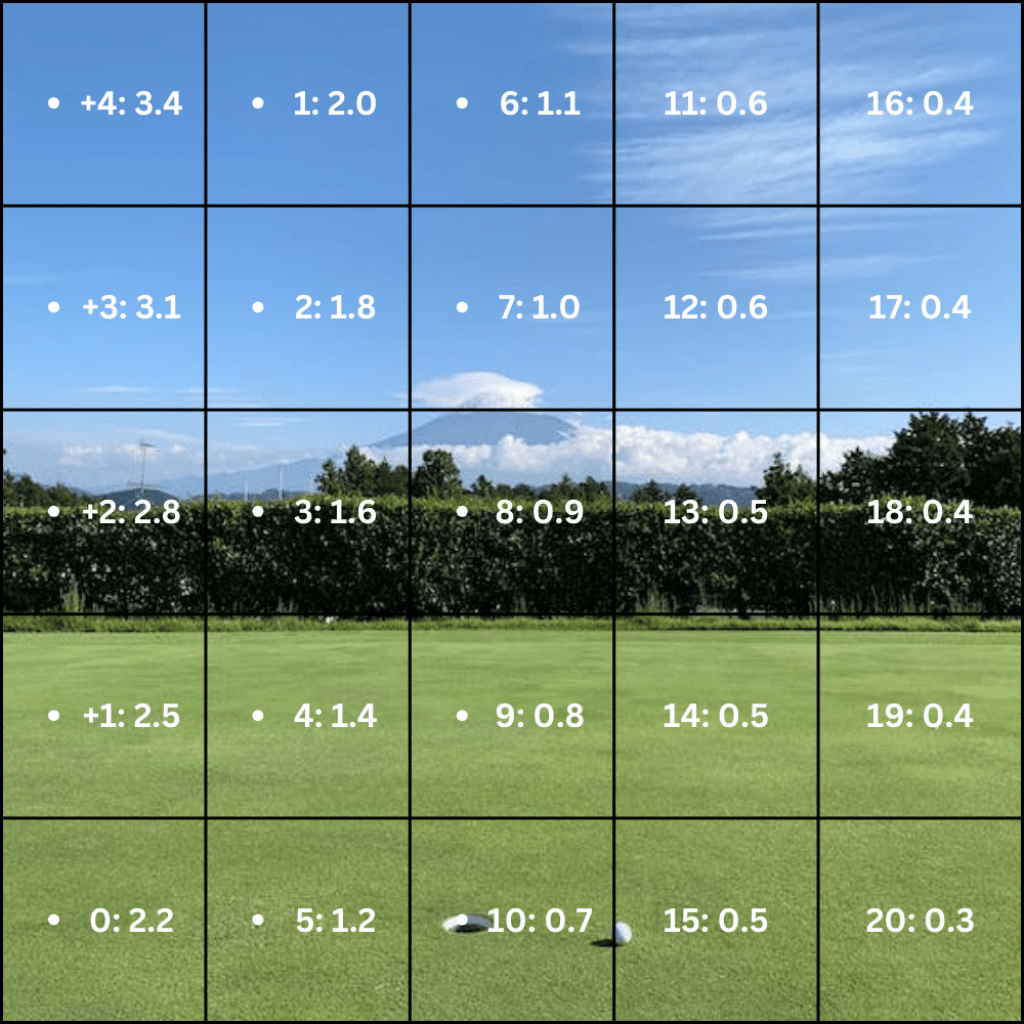
In the sport of golf, a “birdie” refers to a score that is one stroke under par for any given hole. Par is the predetermined number of strokes that an experienced golfer is expected to need to complete a hole.
The Atlantic City Country Club in New Jersey holds a prestigious place in the history of golf, particularly credited with the origin of the term “birdie.” The story dates back to the year 1903. During a round of golf, George Crump (who later built Pine Valley Golf Club, considered one of the best courses in the world), his brother Abner, and their friend William Poultney Smith hit an impressive second shot on a par-4 hole that resulted in a one-under-par score.
The shot was so impressive that Smith proclaimed it a “bird of a shot,” likening its excellence to the beauty of a bird.
What is Birdie in golf courses?
A birdie is a term used in golf to describe a relatively significant achievement for most golfers. When a golfer completes a hole in one stroke less than the expected par, this feat is called a birdie. In other words, if a spot is designated with a par of 4, and a golfer successfully plays it in just 3 strokes, that accomplishment would be called a birdie.
Securing birdies throughout a round can vastly improve a player’s overall score, demonstrating skill and adept course management. While achieving a birdie is laudable, it is not as rare or exceptional as an eagle, which occurs when a golfer finishes a hole in two strokes less than par. Nevertheless, birdies are essential milestones that boost the golfer’s performance and contribute significantly to a winning score.
Where Did The Word Come From
The term “Birdie” in golf has an interesting origin. The word “Birdie” is an American slang term dating back to the late 19th century, meaning something excellent or first-rate. The connection to golf started in 1899 when Ab Smith, a prominent golfer of that period, hit what he defined as a “bird of a shot” during a round of golf.
The shot was so excellent that it took one less stroke for him to complete the hole, which was supposed to be a par hole. Over time and with constant usage, the phrase was eventually shortened to “birdie” and has since become a standard term in the golf glossary to denote a score of one under par on a hole. Despite many changes in the game over the years, the term “birdie” has stood the test of time and is still widely used in golf terminology worldwide.

Scoring a Birdie in Golf
This impressive feat usually occurs when a golfer finishes a hole one stroke fewer than the assigned par, elevating their golf game to new heights. A well-executed birdie showcases players’ skill, strategy, and finesse as they navigate the meticulously designed golf course.
Although it pales compared to the rare and highly coveted “Double Eagle,” which entails sinking the golf ball three strokes below par, a birdie is still a commendable accomplishment worthy of admiration and applause. Undoubtedly, scoring a birdie requires dedication, practice, and precision, making it a cherished milestone for golfers across all skill levels.
PGA Golfers that Made a Lot of Birdie in Golf
Jordan Spieth
An American professional golfer on the PGA Tour and one of the most skilled players of his generation, Jordan Spieth boasts a knack for birdies. In 2015, he had a spectacular season, scoring a record 16-under-par at the Masters. Spieth’s ability to consistently make birdies is a testament to his extraordinary skill and strategic insight on the course. He’s considered one of the best putters in the game, with a precise capability to turn around challenging situations into birdie opportunities.
Rory McIlroy
Hailing from Northern Ireland, Rory McIlroy is another birdie-making machine in the PGA. Known for his powerful and accurate drives, McIlroy can quickly reduce long par fives to birdie chances. In 2019, he ranked at the top for total birdies made during the season. His ability to produce a high volume of birdies has been instrumental in his success, which includes multiple major championship wins.
Justin Thomas
Justin Thomas is an American professional golfer who plays on the PGA Tour. In 2017, he had an impressive run, scoring the most birdies during the season with an incredible total of 399. Thomas’s strategic approach and excellent iron play frequently set him up for birdie opportunities, evident from his low-scoring averages on tour. His propensity for making birdies has been a defining feature of his successful golfing career.
Birdie Average
The “Birdie Average” is a critical performance indicator for golfers, revealing a player’s ability to convert a birdie putt into a successful birdie on a golf hole. This statistic provides valuable insight into a golfer’s scoring consistency and proficiency in making the most out of opportunities throughout a round.
By measuring the number of birdies a player makes relative to the number of holes played, the Birdie Average is an instructive metric to compare golfers on a level playing field. Notably, most golf courses have diverse and challenging holes that test players’ dexterity and problem-solving skills.
An impressive Birdie Average speaks volumes about a golfer’s cohesive understanding of the game and their ability to seamlessly blend power, precision, and techniques to achieve birdies across various golf courses consistently.

What is a Par in a Golf Course
The term “Par” is a fundamental golf term that signifies the predetermined number of strokes an expert golfer is expected to take to finish a golf hole, starting from the initial tee shot to the final putt. This baseline figure is meticulously calculated by considering the specific hole distance and the required steps to reach the green facing the hole.
Par typically ranges from three to five but can extend to six on select courses. It is the benchmark for assessing a golfer’s performance and course management skills on each hole.
The Idea of Par
The idea of “Par,” one of the fundamental golf scoring terms, originated from the United States Golf Association (USGA) as a measure of proficiency for golfers. It serves as a baseline determining the number of strokes a seasoned golfer should ideally take to complete an individual golf hole, from the initial drive to the ball dropping into the hole. The USGA defines par based on the distance from the tee to the hole.
A par-3 hole, for instance, is typically less than 250 yards for men and less than 210 yards for women; a par-4 hole is between 251-450 yards for men and 211-400 yards for women; and a par-5 is 451-690 yards for men and 401-575 yards for women. Earning a par on a hole is exemplary, as it denotes that a golfer has met the standard set by the course, serving as a key factor in assessing golfers’ abilities and scores.
What is a Bogey Man in Golf Courses
The term “Double Bogey” has a quaint origin in the annals of golf history, rooted explicitly in the Coventry Golf Club in England during the late 19th century. Routinely, a ‘Bogey Man’ implies a golfer’s arch-nemesis or a phantom opponent of playing golf.
The concept emerged when the club assigned a standard score, or ‘ground score,’ to each of its holes, representing the tally an excellent golfer would be assumed to achieve. This fictitious score came to be personified as Colonel Bogey, also known as the Bogey Man.
How Many Birdies Do Golfers Make Per Round

Different Ways to Score a Birdie
Scoring a birdie in golf, one under par on a hole, can be exhilarating for both professional and recreational golfers. Depending on how many shots, there are various methods to score a birdie. Here are four different ways:
The Straight Shot
For a par 3 hole, for an average golfer, you only need to land your ball into the hole in two shots. If your tee shot gets you onto the green, a great putt is the next step to secure a birdie.
Excellent Long Game
For a par 4 hole, one way to achieve a birdie is through a solid drive off the tee, ideally landing the ball close to the green. Then, an accurate approach shot that lands your ball near or on the green is necessary. Finally, make that birdie putt to secure your under-par score.
Eagle on a Par 5
Another way to score a birdie is by shooting an “eagle” (2 under par) on a par 5. This involves hitting the ball onto the green in two shots and making one successful putt. This method requires both an excellent long game and finesse with the putter.
Recovery Shots
Even if your initial shots don’t get you close to the hole, a great recovery can still land you a birdie. For example, on a par 4, if your drive doesn’t land you near the green, an impressive long pitch or chip for your second shot could result in a level where you only need to putt once to secure a birdie.
Final Thought
Birdie, one of the golf terms used by expert golfers, is a fundamental component in the sport’s scoring system, indicating a score that is one fewer strokes under par for any given hole. Born from an American slang term for something exceptional and defined by a high-stakes golf game in 1899, the time has become deeply ingrained in the golf glossary.
Earning a birdie is a significant achievement for players, reflecting their skill, strategy, and understanding of the sport. Though it’s not as extraordinary as an eagle (two strokes under par), achieving birdies can crucially influence a player’s overall performance and augment a winning score.








